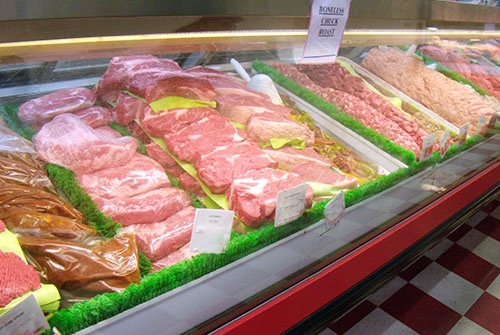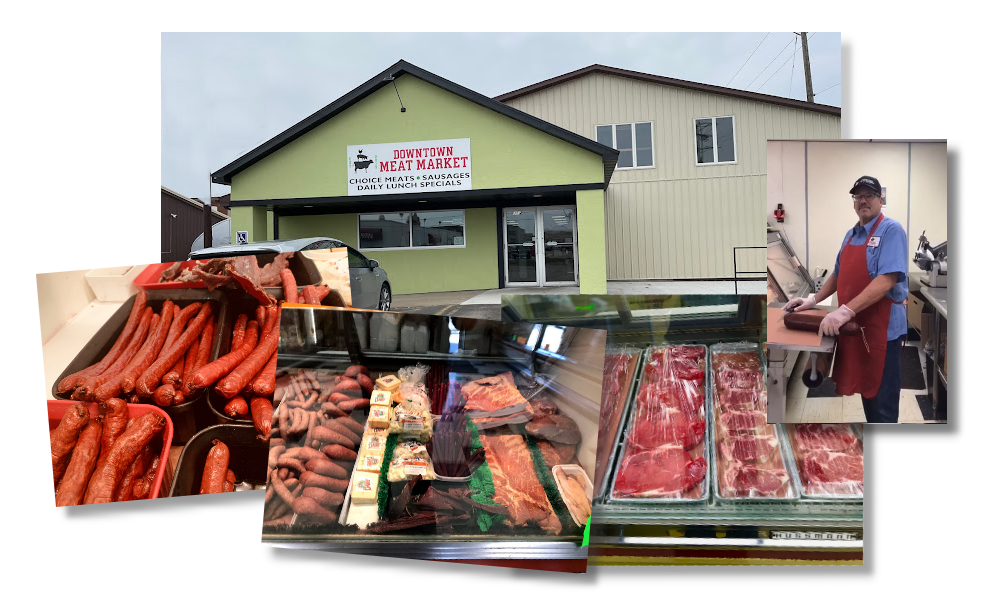Discover Fresh Cuts at Bagley Farms Meat Market Edwardsville IL for Your Following BBQ
Discover Fresh Cuts at Bagley Farms Meat Market Edwardsville IL for Your Following BBQ
Blog Article
Reveal the Art of the Butcher's Cut in a Modern Meat Market
In the ever-evolving landscape of contemporary meat markets, the butcher's cut has transcended its conventional roots, combining old-time workmanship with contemporary methods. What really establishes the modern butcher apart is their ability to build a deeper connection between customers and the origins of their meat.
Development of Butchery Methods
The evolution of butchery techniques shows a rich tapestry of technology and adjustment driven by developments in innovation, changes in consumer need, and a deeper understanding of meat science. Historically, butchery was a craft gave via generations, with methods sharpened over centuries to take full advantage of return and taste. Nevertheless, the commercial revolution ushered in mechanization, changing traditional methods and making it possible for massive handling.
The mid-20th century saw butchery techniques better fine-tuned by scientific understandings right into muscle biology and meat aging, boosting both tenderness and taste. Advancements like vacuum cleaner product packaging and refrigeration expanded item shelf-life, allowing butchers to diversify offerings and enhance quality assurance. This duration likewise marked the rise of customized tools, such as band saws and meat slicers, which raised precision and performance in meat processing.

Digital systems now assist in monitoring pet provenance and enhancing cuts to fulfill particular customer choices. Furthermore, a renewal in artisanal butchery has emerged, mixing typical abilities with modern knowledge to cater to consumers seeking ethical and sustainable meat alternatives.
Recognizing Meat Cuts
Understanding the details of meat cuts is necessary for both butchers and customers looking for high quality and worth. For butchers, precise cuts show skill and regard for the craft, ensuring marginal waste and ideal return.

Comprehending muscle composition is crucial; muscles used more regularly by the pet have a tendency to be tougher and are best fit for slow-moving food preparation approaches, while less-used muscular tissues, like those discovered in the loin, are a lot more tender and suitable for barbecuing or roasting. Familiarity with these differences empowers consumers to make educated selections, improving their culinary undertakings.
Picking Quality Meat
Choosing the right meat involves more than just selecting a visually enticing item from the screen. The art of selecting top quality meat needs a critical eye and expertise of details qualities that signify freshness and quality.
Secondly, consider the marbling, which refers to the white flecks of fat within the muscular tissue. Correct marbling is a key indicator of inflammation and taste, as it thaws throughout cooking, improving the meat's juiciness. Remember, greater marbling frequently correlates with superior high quality cuts, such as USDA Prime.
Texture is an additional essential factor; meat must feel strong to the touch, not slimy or excessively soft. Additionally, bear in mind the scent. Fresh meat ought to have a clean, neutral smell, without any type of sour or repulsive smells.
Combining Cuts With Food Preparation Techniques

Alternatively, tougher cuts like brisket and chuck roast are rich in collagen, which breaks down into jelly when cooked gradually. These cuts are perfect for braising or slow roasting, permitting the meat to soften in time and develop deep, complex flavors. Cuts such as brief ribs and pork shoulder make out well with slow-cooking approaches, where expanded cooking times change their durable structures right into delicious recipes.
Lamb shanks and oxtail, which need long term food preparation to soften, are best prospects for cooking or slow simmering. These techniques coax out rich, hearty flavors while maintaining moisture. By understanding the unique attributes of each cut, chefs and home chefs alike can raise their cooking creations, making sure each recipe is both pleasing and memorable.
The Butcher's Duty Today
Navigating the developing landscape of the modern-day meat market, the butcher's function today prolongs past simple prep work of cuts. Contemporary butchers are cooking craftsmens, instructors, and advocates for sustainable methods.
Along with crafting specific cuts, butchers currently involve straight with customers, providing cooking suggestions and customizing options to match individual requirements and preferences. Their expertise in meat aging, marbling, and flavor accounts equips customers to make educated decisions, improving their cooking experiences. This individualized solution exemplifies the butcher's progressing duty as a relied on consultant in the cooking area.
Furthermore, butchers are pivotal in decreasing waste, utilizing whole animals to create varied products such as sausages and stocks. This thorough method not just appreciates the pet yet likewise lines up with modern sustainability objectives. By doing this, the modern-day butcher symbolizes both custom and technology, adapting to an ever-changing market while maintaining the creativity and stability of their craft.
Verdict
The modern butcher's craft intricately weaves conventional methods with contemporary advancements, stressing sustainable practices click here to read and moral see this page sourcing. Mastery in understanding varied meat cuts and high quality indicators encourages butchers to supply informed suggestions, lining up specific cuts with optimum cooking techniques. This expertise not only raises culinary experiences but additionally strengthens the link in between consumers and the origins of their food. By recognizing historical techniques while accepting contemporary needs, the butcher's function remains essential in today's advanced meat market (bagley farms meat market edwardsville il).
Report this page